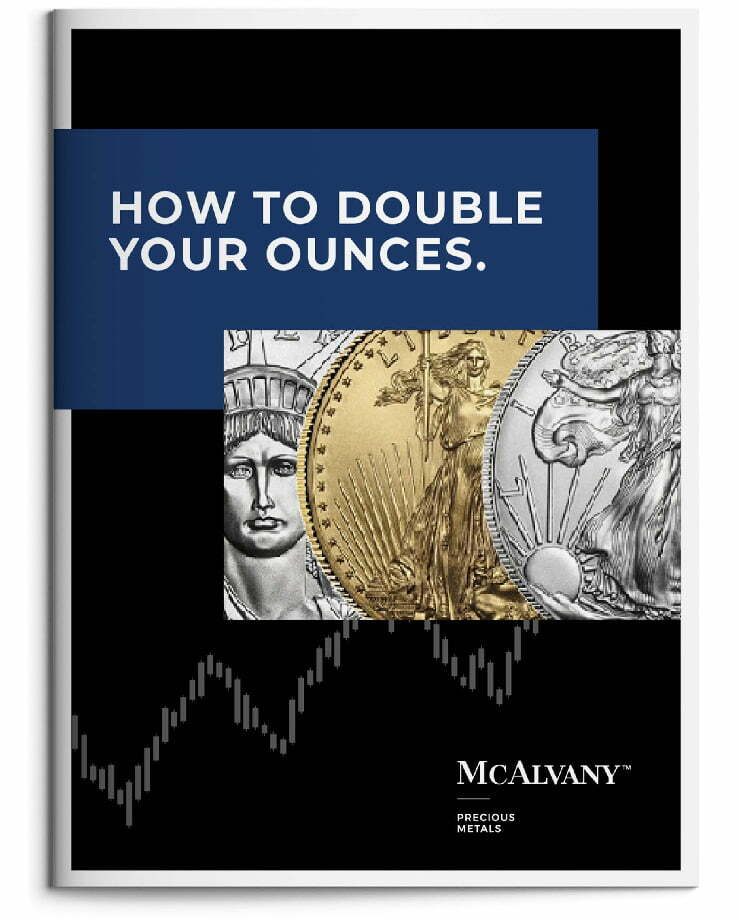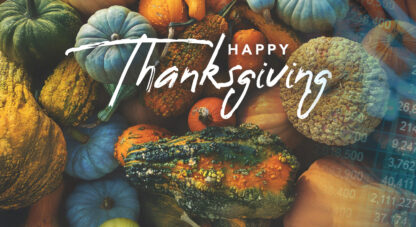The Countdown to Cuts
In August, HAI favorite commodity research firm Goehring & Rozencwajg (G&R) wrote—seemingly prophetically—of a new “inflationary era” now beginning that would be every bit as consequential to the future as the last multi-decade era of disinflation has been to our past. As G&R put it, “We believe the inflationary era now beginning could match that disinflationary stretch in both length and consequence. And once again, the match may be struck at the Federal Reserve. Just as [1970s Fed Chairs William McChesney] Martin and [Arthur] Burns—each under immense presidential pressure— reluctantly opened the monetary spigots, we suspect Jerome Powell will do the same. Whether by resignation or capitulation, the result will be familiar: a surge in inflation, swift and difficult to contain. The past, it seems, is not done with us yet.”
Since that prediction, and despite core CPI already at 3.1% and rising, we’ve watched immense Trump administration pressure on Powell to cut rates translate to a surprisingly dovish Powell at Jackson Hole. This week, signs of labor market weakness seemed to cement that dovish policy direction for the remainder of the year. In time, that may also cement a 1970s-like secular inflation stoking a continuation of a generational bull market in gold and hard assets that’s already begun.
For years, HAI has repeatedly suggested that the Fed, trapped between both an inflation problem and a serious Federal government debt and deficit problem, will have to pick its poison. The Fed seemingly can’t raise rates further to effectively fight inflation (because the resulting weakened economy would hit tax receipts just as the increase in rates would spike interest expenses—threatening a debt-spiral), and can’t cut rates to ease the debt and deficit problem without stoking the inflation fire.
This week, however, we appeared to get confirmation that growing signs of weakness in the labor market have provided an exceptionally bullied Fed with the cover necessary to cut rates and pick inflation as its poison.
This week, the labor market certainly offered reasons for concern. Non-farm payrolls came in at 22,000 versus expectations for 75,000. The unemployment rate increased to 4.3%, the highest since the 2021 Covid-era. Even worse, recall that last month the BLS revised June non-farm payrolls down from 147,000 to just 14,000. Now they’ve revised June jobs down a second time to a remarkable -13,000. That totals a shocking 160,000 of negative revisions to originally reported June job numbers, and marks June as the first negative month for payrolls since the pandemic.
Adding color to the cause for concern, HAI favorite economist David Rosenberg opined that, “The BLS did its best to paint lipstick on this pig of a payroll report because the Birth-Death model managed to add 96,000 jobs to the headline. Strip that out, and what the actual survey showed was a 74,000 decline. In fact, payrolls have declined on an ex-BD basis now in each of the past four months, something that last happened in the summer of 2010 when the economy was crawling out of the Great Recession.”
In addition, Challenger, Gray and Christmas data this week showed job cuts reached 88,736 in August for the highest August total since 2020. Year-to-date, total job cuts are now at 892,362, up 66% compared to 2024. Aside from the pandemic, there has not been an August total that exceeded 85,000 job cuts since the 2008 Great Financial Crisis.
Earlier this week, yet another labor market gauge signaled worrying weakness. In July, the JOLTS report (JOLTS data is one-month lagged) showed that the U.S. had 7.18 million job openings for 7.24 million unemployed people. That marks the first time we’ve had more unemployed people than job openings in the U.S. since April of 2021.
As Heather Long, chief economist at Navy Federal Credit Union, said late this week referring to the totality of the recent weak labor data, “The labor market is going from frozen to cracking… This is a white-collar and a blue-collar jobs recession.”
To bring this week’s labor data back to a Fed trapped between inflation and a debt and deficit problem, for more than twenty-five years, every time the number of U.S. unemployed has risen above JOLTS job openings data, the U.S. fiscal deficit as a percentage of GDP has increased by at least 6%. In other words, history would suggest that the deficit-to-GDP is about to begin rising meaningfully. That is likely to put upward pressure on long-term U.S. Treasury yields, increase U.S. interest expenses, and threaten accelerated debt spiral dynamics—unless the Fed cuts rates significantly, stimulates the economy aggressively, and implements some sort of yield curve control on the long end of the curve if necessary.
Sure enough, as of Friday markets now anticipate a 25 basis point rate cut in each of the remaining three FOMC meetings of 2025. Further, a 50-bp rate cut later this month is at least in the discussion.
In short, despite four years and four months of the Fed failing to contain inflation at or below its 2% target, policymakers are now poised to initiate a new rate cutting cycle likely to further sacrifice the inflation mandate in favor of stimulating the jobs market, and, in particular, easing the risk of imminent debt spiral dynamics.
If we combine this particular inflation stimulant with the likelihood of highly inflationary and stimulatory U.S. industrial policy discussed in recent HAIs (the national security imperative for government money printing to pay for the re-shoring and revitalization of our national manufacturing base), then Goehring & Rozencwajg’s prognostication that “the next inflationary surge is about to begin” looks increasingly like a fait accompli.
Needless to say, as it becomes increasingly clear to Western market participants that inflation is likely to be our new secular reality, and that the Fed is compromised by the new primary shadow mandate of protecting U.S. government solvency, gold, the entire precious metals complex, and hard assets more broadly are the obvious beneficiaries.
Gold is already on pace for its best year since 1979, up over 35% in 2025. In fact, gold’s year-to-date gains have only been beaten annually in 1972 (48.8%), 1973 (73%), 1974 (66.1%), 1978 (37%), and 1979 (126.5%). That data offers at least two insights. First, if gold wants to go up significantly further during the remainder of the year, it certainly has historical precedent to do so. Second, gold is doing bullish things it hasn’t done in well over four decades—a fact that supports HAI‘s view that this gold bull market will prove to be even more substantial than the last one that started in 2001.
As Goehring & Rozencwajg said in August, “the renewed political pressure bearing down on the Federal Reserve—quiet to some, unmistakable to others—carries with it deeply unsettling implications… Inflation is not retreating, but merely pausing. And soon enough, it will accelerate again—swiftly, stubbornly, and disruptively.”
When inflation eventually re-accelerates while the Fed cuts rates and looks the other way, there will no longer be any doubt in the minds of market participants that gold and hard assets are the safe harbor to turn toward.
Interestingly, this week, even cryptocurrency stablecoin Tether indicated an appetite to “tether” it’s underlying value to gold. Tether is one of the world’s most profitable crypto companies. It runs the USDT token, which is pegged to the US dollar; has a market capitalization of $168bn; and generated profits of $5.7bn in the first half of this year. Tether is also one of the biggest holders of US Treasuries, making its money from the interest it earns on the Treasuries it holds to back the token.
Perhaps the looming possibility of yield curve control and secular real (inflation adjusted) losses on Treasuries is the prime motivating factor for the fact that, this week, the Financial Times reported, “Tether, the world’s biggest stablecoin company, has held talks about investing in gold mining, seeking to deploy its vast crypto profits into bullion.”
The FT continued, “The company has held discussions with mining and investment groups about investing in the entire gold supply chain, from mining and refining to trading and royalty companies, according to four people familiar with the recent talks.”
The FT added that, in May, Tether chief executive Paolo Ardoino said of cryptocurrency that, gold is “natural bitcoin… I think gold is our source of nature.” In HAI‘s view, when so-called digital gold seeks to underpin its value by buying up it’s “source of nature,” it’s a very good indication that the real value is in the gold.
Like Tether, HAI agrees that now (the beginning of G&R’s new “inflationary era”) is an excellent time to convert vulnerable paper wealth into the real value of gold and related assets. And apparently, amid the countdown to cuts, the market is starting to catch on. Gold closed Friday at its highest closing price in history, but that record price might soon seem quite the bargain in comparison to where HAI believes the gold price will soon be headed.
Weekly performance: The S&P 500 was up 0.33%. Gold was up 4.06%, silver gained 3.13%, platinum gained 0.92%, and palladium was nearly flat, up 0.05%. The HUI gold miners index gained 4.25%. The IFRA iShares US Infrastructure ETF was up 0.12%. Energy commodities were volatile and mixed on the week. WTI crude oil dropped 3.06%, while natural gas was up 1.38%. The CRB Commodity Index was off 0.66%. Copper was down 0.98%. The Dow Jones US Specialty Real Estate Investment Trust Index was lower by 0.73%. The Vanguard Utilities ETF was off 0.89%. The dollar index was nearly flat, down 0.02% to close the week at 97.75. The yield on the 10-yr U.S. Treasury was down 3 bps to close the week at 4.23%.
Have a wonderful weekend!
Best Regards,
Morgan Lewis
Investment Strategist & Co-Portfolio Manager
MWM LLC















